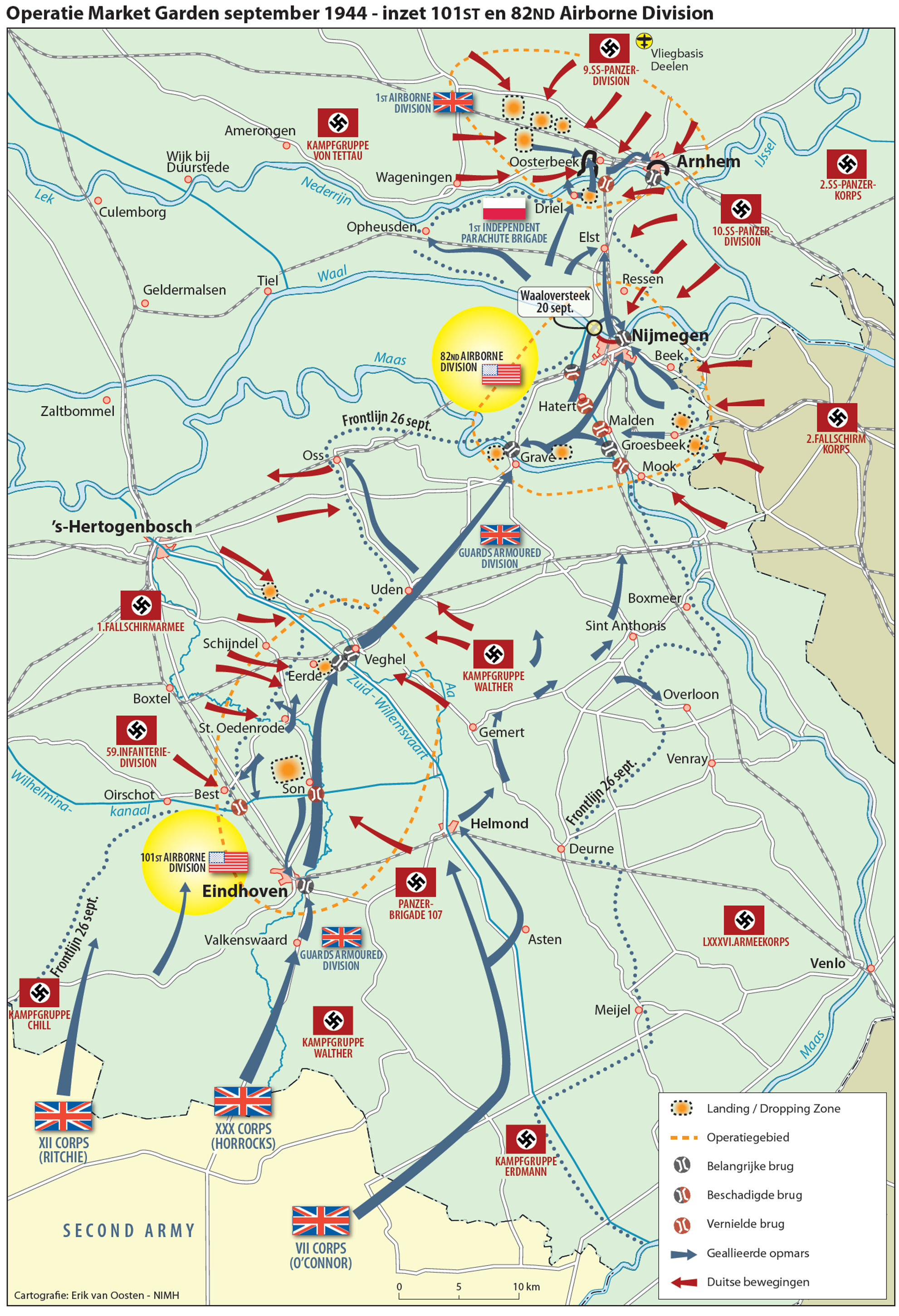Operation Market-Garden
 (Map from US Embassy and Consulate in the Netherlands website) September, 1944: after almost 2 months of very slow progress, the Allies had finally broken the Normandy front wide open. The Germans were on the run everywhere and the Allied armies had advanced so fast and so far across France and Belgium that they were outrunning their supply lines. Eisenhower had favored a broad front approach in the advance to Germany with all armies advancing in a big line, pressing the enemy back everywhere at once, and never letting them catch their breath, while others favored narrower targeted thrusts. Since he was in command of SHAEF, he got his way. As the Allies approached Germany, however, there were not enough supplies getting to the front over the long distances from the channel ports to support all the armies advancing all at once. It was time to pick and choose where to attack and where to hold up. General Montgomery chose this moment to propose a bold plan, that if it worked, could end the war by Christmas. This involved the use of the newly formed 1st Allied Airborne Army executing the largest airborne operation ever attempted. The plan called for a simultaneous drop of three Airborne divisions, plus the Polish Brigade, seizing and holding at least 8 bridges on a 56 mile route north through Holland. Ground forces, led by the veteran British XXX Corps, would rush up this corridor and create a bridgehead across the Lower Rhine for punching into the industrial heartland of northwest Germany to the east, thereby bypassing the vaunted Siegfried Line. If all went according to plan, the farthest bridge at Arnhem would be reached in just 3 or 4 days. The German defense in the area mostly consisted of a number of broken units, sent there for rebuilding. Tank support was considered to be almost non-existent as the Germans had suffered giant losses of equipment in the Falaise pocket disaster in Normandy. The speed of the operation would make it difficult for the Germans to reinforce the area in time to matter. The Germans seemed to be on their heels, just waiting for the right push to make them collapse.
|
|
|
1st Allied Airborne Army British 52nd Airlanding Division
|
Germans Eindhoven Hell's Highway KG Walther/6th Fallschirmjager Day 7 Groesbeek Heights Nijmegen Arnhem Von Tettau Day 3
|